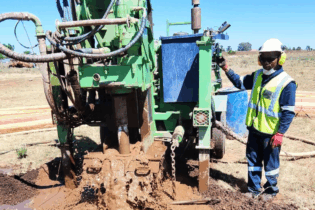The future of South Africa’s water security will depend heavily on renewed government vigour after the May elections. This is the view of industry expert Peter Shepherd.
According to Shepherd, who is a partner and principal hydrologist at SRK Consulting, the country still has a long way to before it can deliver on the National Water Week theme of ‘Leaving No One Behind’. “We have simply left it too late, by not planning far enough ahead and by failing to implement water projects when they have been planned,” Shepherd explains.The situation on the ground
To meet South Africa’s SDG Goal 6 on water, the National Development Plan had stated that all citizens will have “affordable access to sufficient safe water and hygiene sanitation to live healthy and dignified lives” by 2030. The Department of Water and Sanitation (DWS) water resource assessment for key demand areas showed last year that “28% of the towns already have inadequate water resources and are in need of urgent attention” The DWS also noted that total registered water usage in the country had already reached the estimated 2025 high water requirement of 17.3 billion m3/annum. Current water usage already exceeds reliable yield in many water supply systems, reported the department, making these areas particularly vulnerable to large-scale and lengthy water restrictions during drought.Pressure to re-vitalise planning and implementation
With this in mind Shepherd notes that there is now extreme pressure on government to re-vitalise its planning and implementation functions, to catch up with widespread backlog of services. The challenge is heightened by the poor state of the economy and certain underperforming state-owned enterprises, leading to added strain on the state’s coffers.“The lead times related to water infrastructure development need to be counted in decades, rather than years, especially when planning new sources of supply for our growing population,” he said.
“Similar timeframes apply to new projects on which our economic growth relies; increasingly, new ventures like mines will be further away from existing infrastructure, including water, and this has to be provided to facilitate the economy’s growth.”







